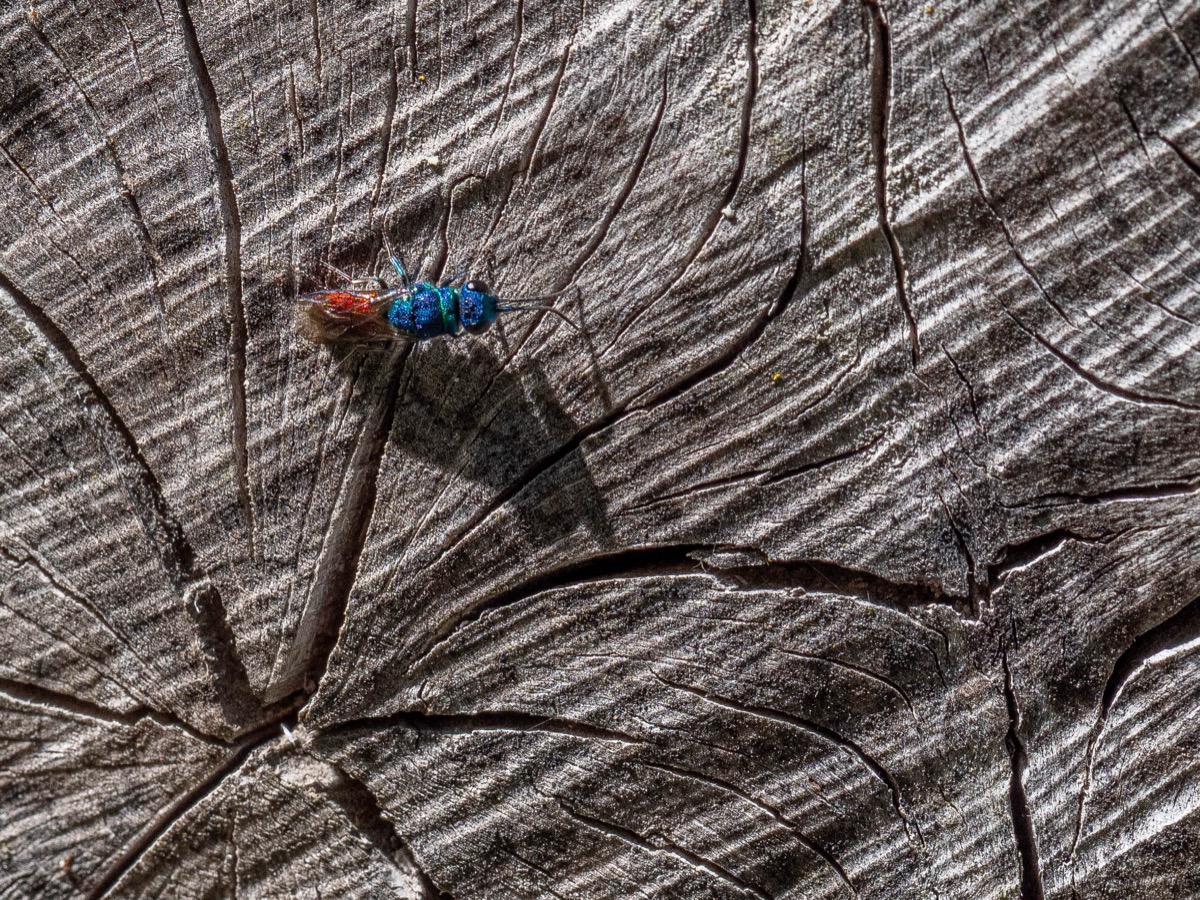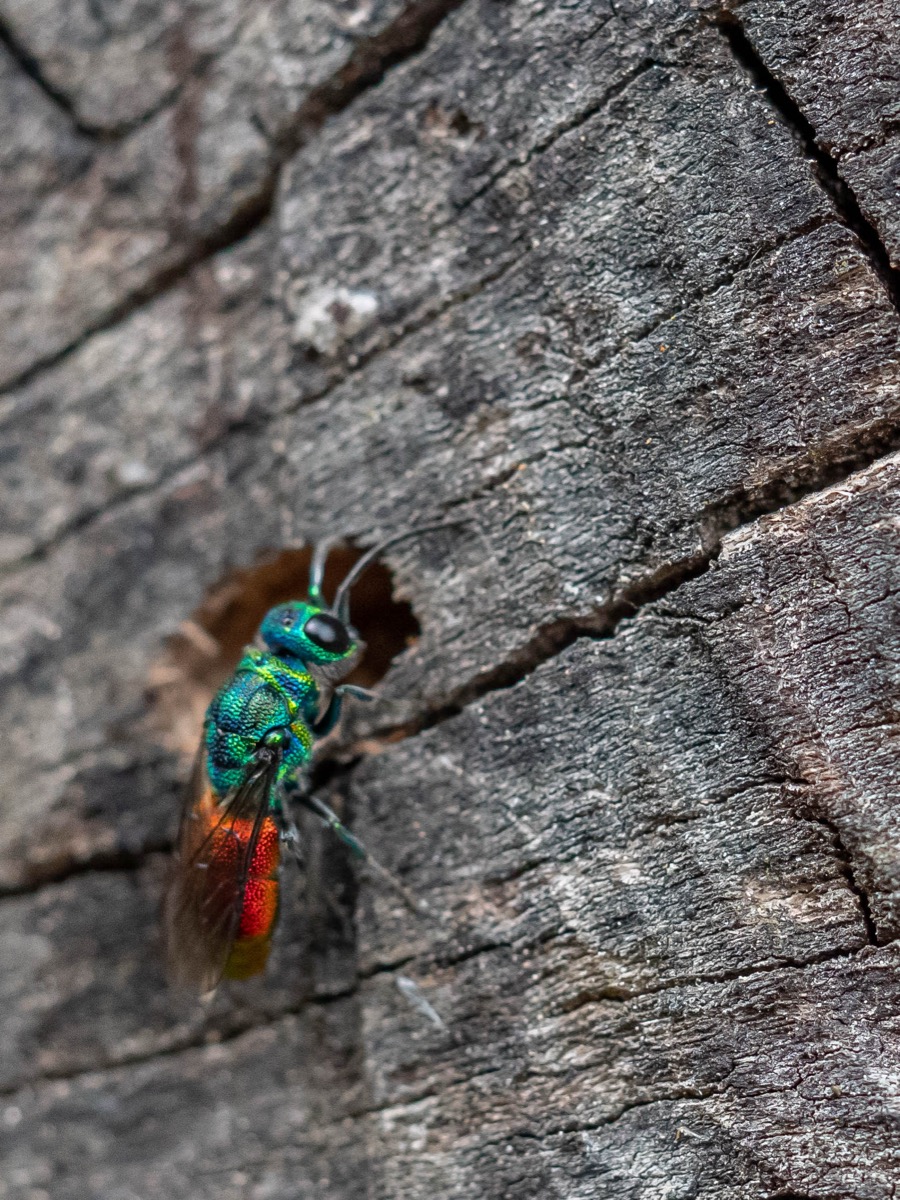Characteristics
- Bright metallic colors (blue, green, red, gold…)
- Compact body and hard cuticle
- No functional sting (the ovipositor is used only for egg-laying)
- Typical defense behavior: curls into a ball (thanatosis)
Habitat
Jewel wasps are found in:
- Old walls, dry stone walls
- Bare soils, rocky areas, warm fallows
- Sandy embankments, nesting areas of burrowing hymenopterans
- Sunlit flowers (umbellifers, apiaceae…)
Biology
- Cleptoparasites of solitary bees and wasps (e.g., Osmia, Megachile, Eumeninae, Sphecidae, Crabronidae…)
- The female lays eggs in the host’s nest, often in its absence
- The larva consumes the food stores, sometimes the host egg or larva
- One generation per year, active in mid-summer
Common Genera
- Chrysis – The most represented genus, highly diverse, often very colorful
- Hedychridium, Chrysura, Elampus – Other colorful genera, sometimes very localized
- Pseudospinolia, Holopyga – Small genera sometimes specialized on specific hosts
Distinctive Features
- Highly resistant to aggression thanks to their exoskeleton
- Excellent ability to locate host nests
- Important for the ecological balance of hymenopteran communities
Chrysididae are also known as “cuckoo wasps.” They are named after the cuckoo bird, which parasitizes the nests of other species by laying its eggs there.
Over 3,000 species have been described.
They are relatively small, around 10 mm, and are highly colorful with a metallic appearance.
Females search for the nests of other hymenopterans to lay their eggs. The emerging larva will feed on whatever is available in the host’s nest.


